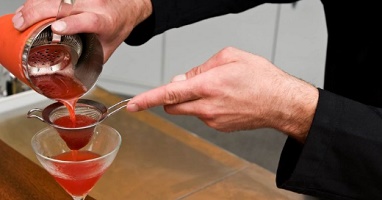What is distillation?
We explain what distillation is, examples of this separation method and the types of distillation that can be used.
-
What is distillation?
Distillation is called a phase separation method , also called mixing separation methods , which consists of the consecutive and controlled use of two other physical processes: vaporization (or evaporation ) and condensation , using them selectively to separate ingredients of a mixture usually of the homogeneous type, that is, in which its elements cannot be distinguished with the naked eye.
The mixtures susceptible to distillation can contain two liquids , a solid in a liquid or even liquefied gases , since this method takes advantage of the boiling point of the substances , one of the inherent characteristics of the matter.
The boiling point is, then, the precise temperature at which a liquid becomes gas (that is, it evaporates).
Thus, for the distillation to be carried out correctly, we must boil the mixture until it reaches the boiling point of one of the integrating substances, which will then become steam and can be conducted to a cooled container, in which to condense and recover your liquidity.
The other integral substance, however, will remain in the container without alterations; but in both cases we will have pure substances , free of the initial mixture.
-
Distillation Examples

- R oil refining . The separation of the various hydrocarbons present in the oil is carried out by fractional distillation, storing each compound derived from the cooking of crude oil in different layers or compartments. These gases rise and condense in higher layers, while denser substances such as asphalt and paraffin remain.
- C racking catalyst . This is what certain vacuum distillations called in oil processing are called, using vacuum towers to separate gas from cooking oil. Thus the boiling of the hydrocarbons is accelerated and the process is expedited .
- Purification l ethanol . To separate alcohols such as ethanol from water during laboratory production, azeotropic distillation is used, adding to the mixture benzene or other components that promote or accelerate the separation, and which can then be easily removed without altering the chemistry of the product .
- Coal processing . To obtain liquid organic fuels, coal or wood is used by dry distillation procedures: thus the gases emitted in combustion can be condensed.
- Thermolysis of mineral salts . Through dry distillation various mineral substances of high industrial utility are obtained, from the emanation and condensation of gases obtained by burning mineral salts.
- The still . This is the name of the device invented in Arab antiquity, whose purpose is to produce perfumes, medicines and alcohol from fermented fruits. In its operation, the principles of distillation are used: substances are heated in a small boiler and the gases produced in a coil that leads to another vessel are cooled.
- Perfume production . Trailing steam distillation is used to obtain perfumes, boiling water together with preserved flowers, to produce a gas full of the desired smell, and which, when condensed, can be used as a base liquid in perfumes.
-
Types of distillation
Distillation can occur in different ways:
- Distillation s imple . The most elementary is to boil the mixture until the elements are separated. It does not guarantee, however, the total purity of the distilled substance.
- Distillation f raccionada . It is carried out by means of a fractionation column: different plates in which evaporation and condensation occur successively, guaranteeing greater purity in the result.
- Vacuum distillation . Using the generated vacuum pressure, the process is catalyzed to reduce the boiling point of the ingredients in half.
- Distillation to zeotropic . The necessary to break an azeotrope, that is, a mixture whose substances behave as one, even sharing the boiling point. It includes the presence of separating agents, all according to Raoult’s Law.
- Distillation by steam entrainment . Volatile and non-volatile components of a mixture are separated by direct injection of water vapor.
- Distillation s eca . It consists of heating solid materials without liquid solvents, obtaining gases and then condensing them in another container.
- Improved distillation . Also called alternating or reactive distillation, they adapt to specific cases of difficult-to-separate mixtures or the same boiling point.




